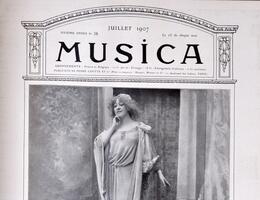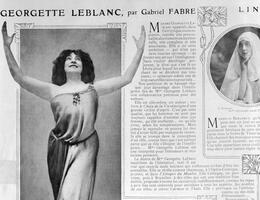Ariane et Barbe-Bleue
The dramatic power and acoustic beauty of Ariane et Barbe-Bleue, premiered at the Opéra-Comique on 10 May 1907, make this one of the greatest operas in the French repertory. Composed between 1899 and 1906, this masterpiece is a post-Wagnerian work, along with (in the French sphere) d’Indy’s Fervaal (1897), Debussy’s Pelléas et Mélisande (1902), Chausson’s Le Roi Arthus (1903) and Fauré’s Pénélope (1913). Based on a libretto written by Maurice Maeterlinck for his companion, the singer Georgette Leblanc, Ariane et Barbe-Bleue provides a mysterious, almost esoteric version of the famous tale—in other words, a “symbolist” version. As in the score of Pelléas, the use of the whole-tone scale and leading themes is apparent in Dukas’ work. However, the similarity stops there: Dukas’ music in Ariane is less revolutionary than Debussy’s, and its lush writing still shows the influence of Post-romanticism. Despite its success, Ariane et Barbe-Bleue was a work that appealed mainly to connoisseurs (Schoenberg, Berg or Messiaen, for example, were fascinated by it), before it went on to attract wider interest in the early 21st century. The jewel scene in Act I has remained famous for its shimmering orchestral writing, as has the repeated reappearance of the enigmatic Chanson des filles d’Orlemonde. The theme that represents Ariane opening the six doors, in Act I, is developed in six keys. Act II contains a long, magnificent crescendo that leads up to the moment when the stage is flooded by dazzling light, and Act III is a varied recapitulation of the first act.


